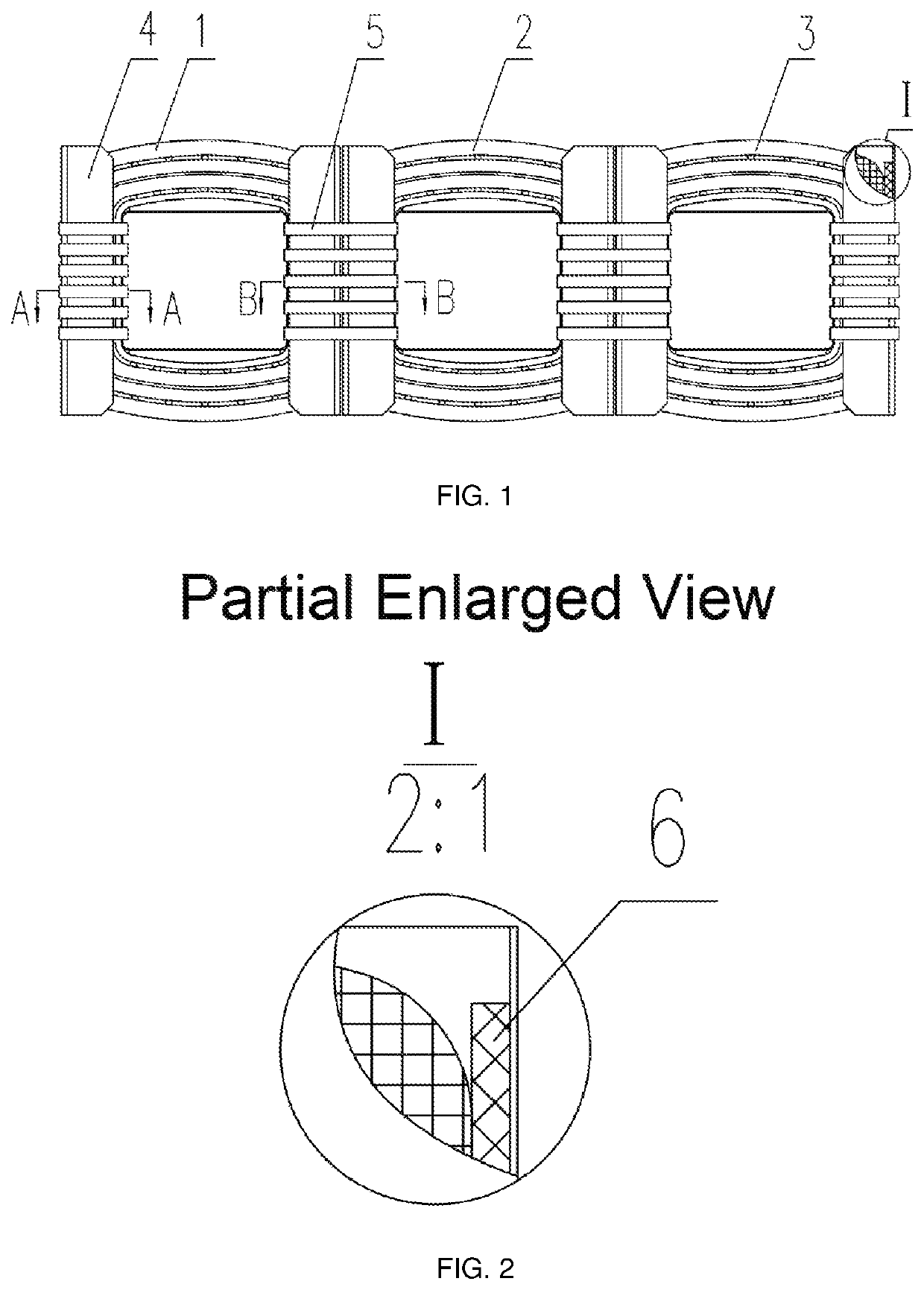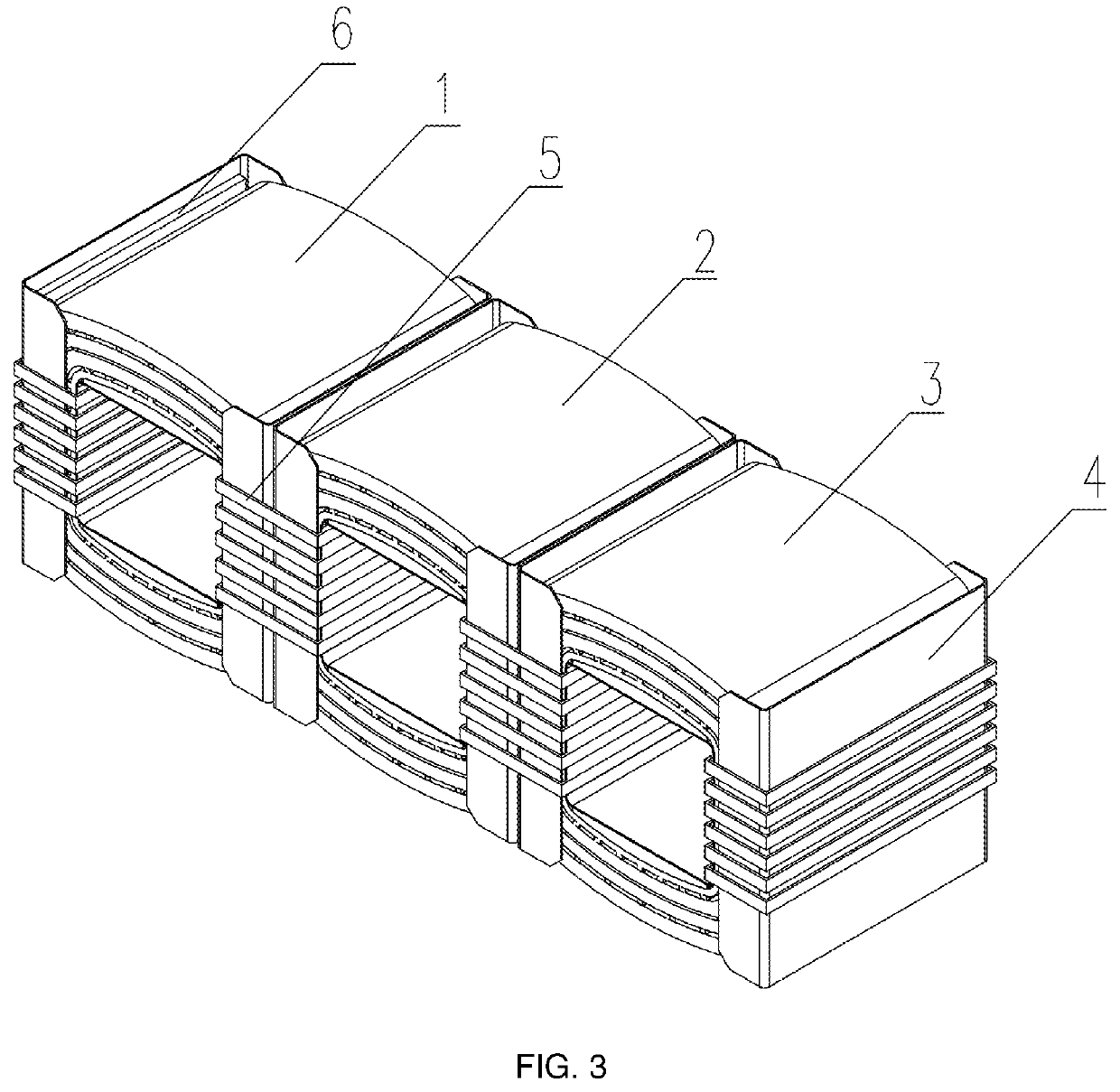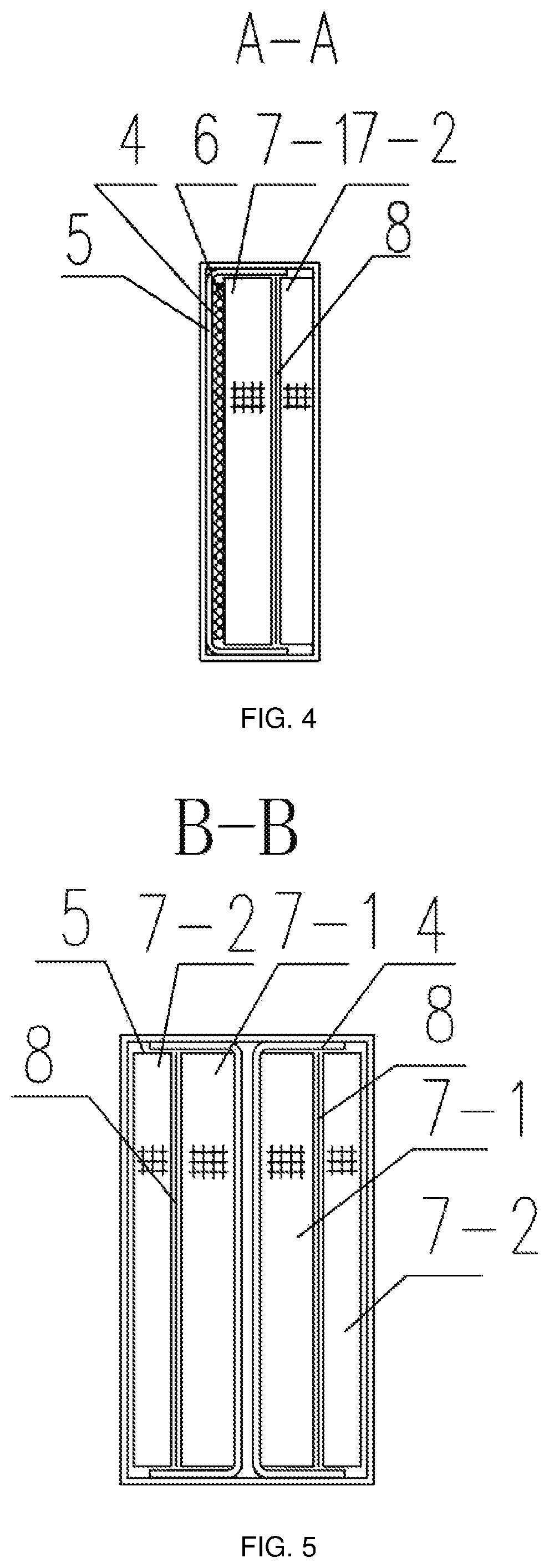Self-clamping structure for solving short-circuit resistance problem of amorphous alloy transformers
a technology of amorphous alloy transformers and self-clamping, which is applied in the field of transformers, can solve the problems of low-voltage coils that cannot be tightly expanded by the iron core, poor resistance to short circuits, and prone to excessive deformation or short-circuit damage, so as to prevent radial deformation of the coil and reduce the cost of manufacturing the transformer.
- Summary
- Abstract
- Description
- Claims
- Application Information
AI Technical Summary
Benefits of technology
Problems solved by technology
Method used
Image
Examples
Embodiment Construction
[0019]The present disclosure will now be described in further detail with reference to the accompanying drawings and preferred embodiments. These drawings are simplified schematic diagrams that only schematically illustrate the basic structure of the present disclosure, and thus only show the configurations relevant to the present disclosure.
[0020]As shown in FIGS. 1 to 3, a self-clamping structure for solving the short-circuit resistance problem of amorphous alloy transformers comprises an A-phase coil, B-phase coil and C-phase coil which are horizontally arranged, wherein the A-phase coil 1 is adjacent to and in close contact with the B-phase coil 2, and the B-phase coil 2 is adjacent to and in close contact with the C-phase coil 3. In FIG. 1, he A-phase coil, the B-phase coil and the C-phase coil each comprise a high-voltage coil located at an outer side thereof and a low-voltage coil located at an inner side thereof; the low-voltage coil is a foil-wound coil formed by winding co...
PUM
| Property | Measurement | Unit |
|---|---|---|
| short-circuit resistance | aaaaa | aaaaa |
| mechanical strength | aaaaa | aaaaa |
| voltage | aaaaa | aaaaa |
Abstract
Description
Claims
Application Information
 Login to View More
Login to View More - R&D
- Intellectual Property
- Life Sciences
- Materials
- Tech Scout
- Unparalleled Data Quality
- Higher Quality Content
- 60% Fewer Hallucinations
Browse by: Latest US Patents, China's latest patents, Technical Efficacy Thesaurus, Application Domain, Technology Topic, Popular Technical Reports.
© 2025 PatSnap. All rights reserved.Legal|Privacy policy|Modern Slavery Act Transparency Statement|Sitemap|About US| Contact US: help@patsnap.com



